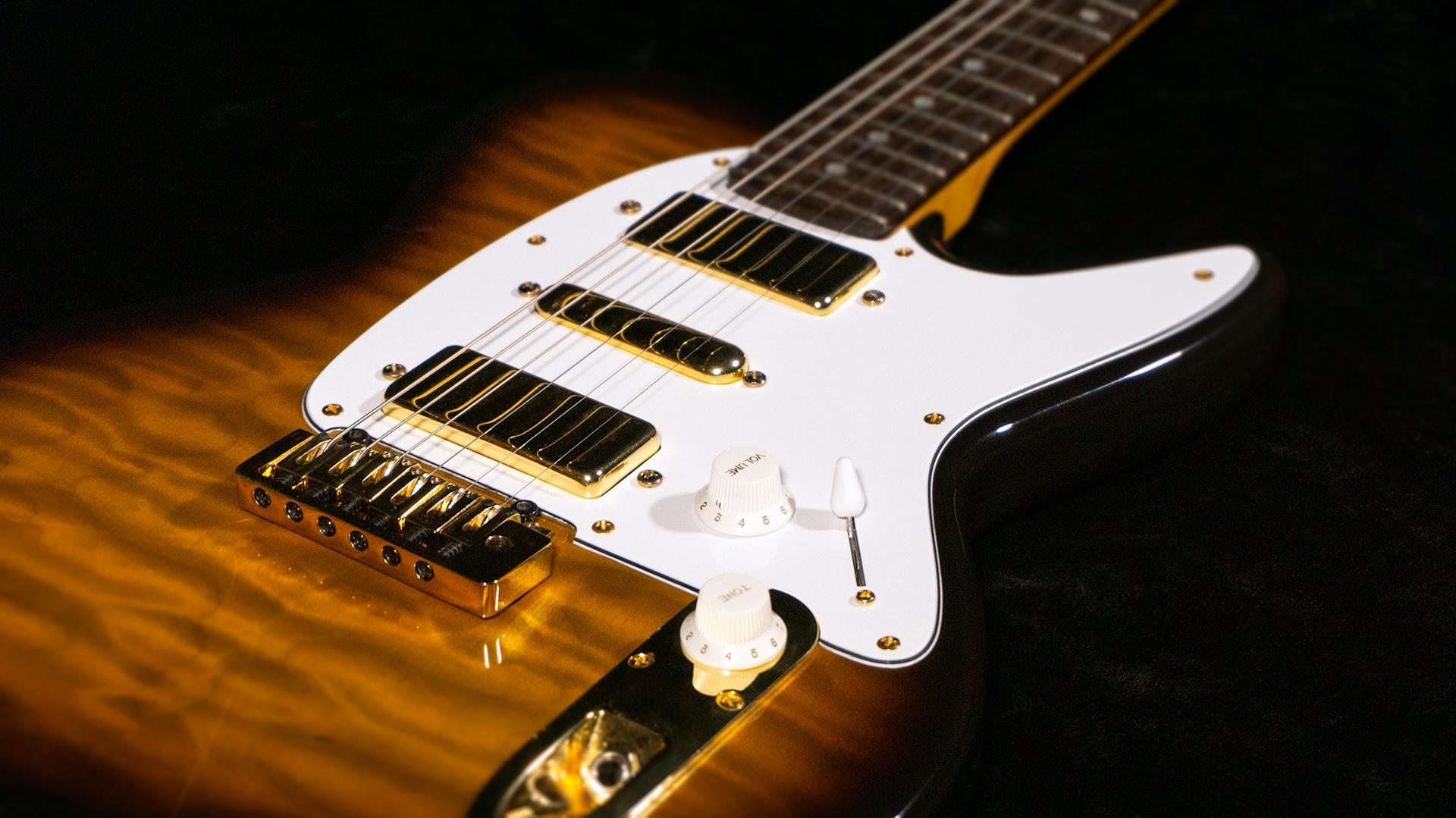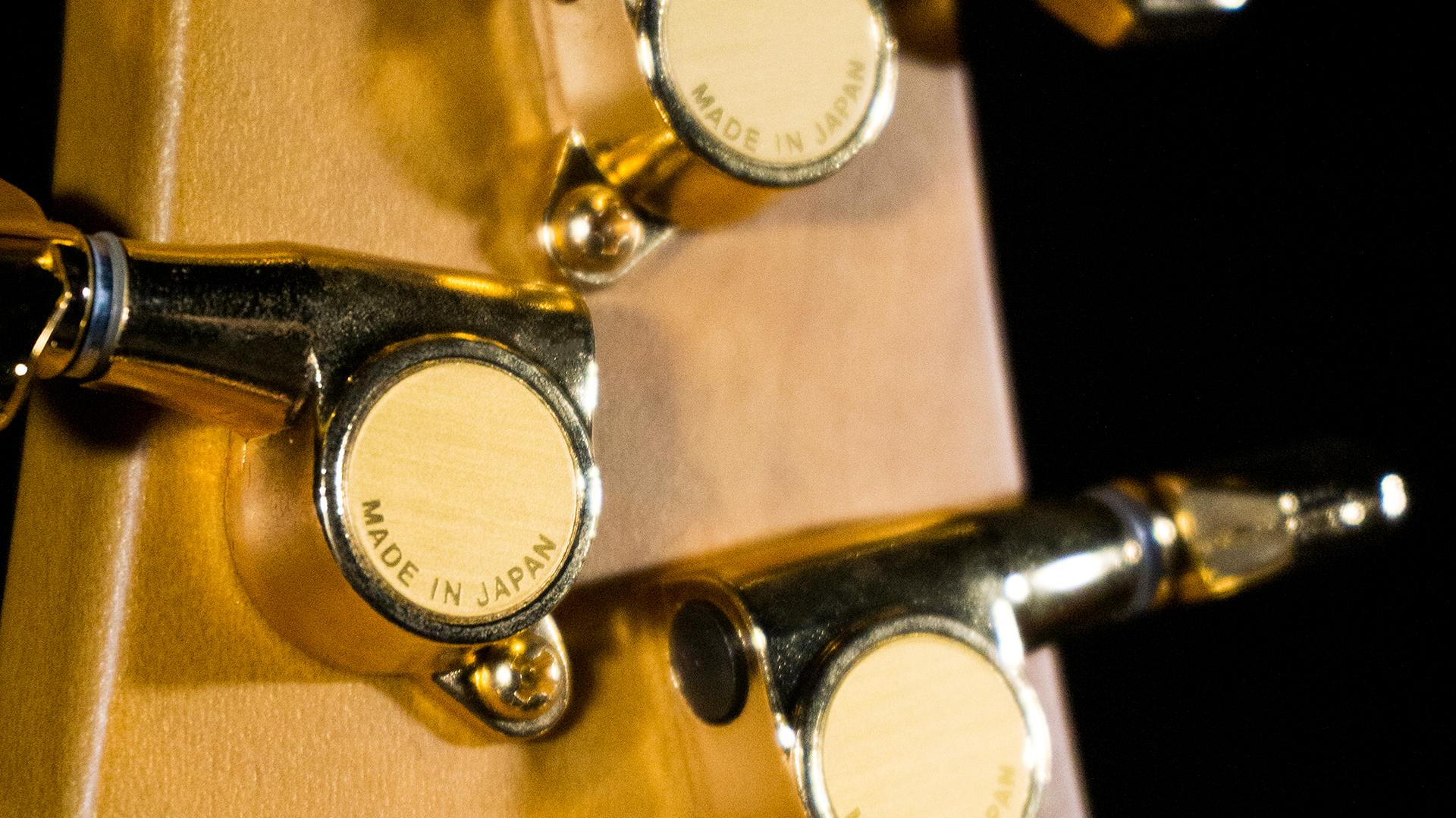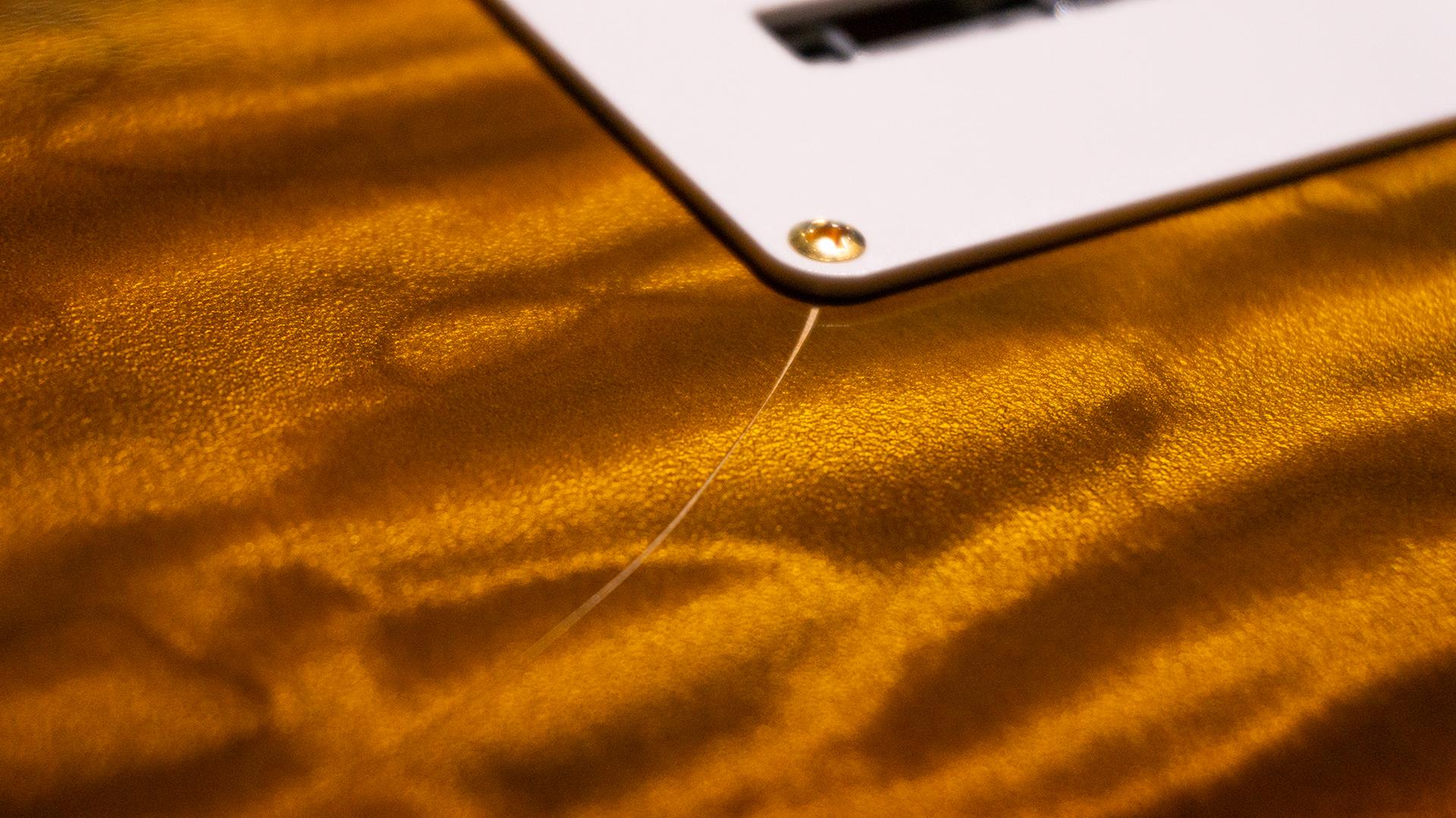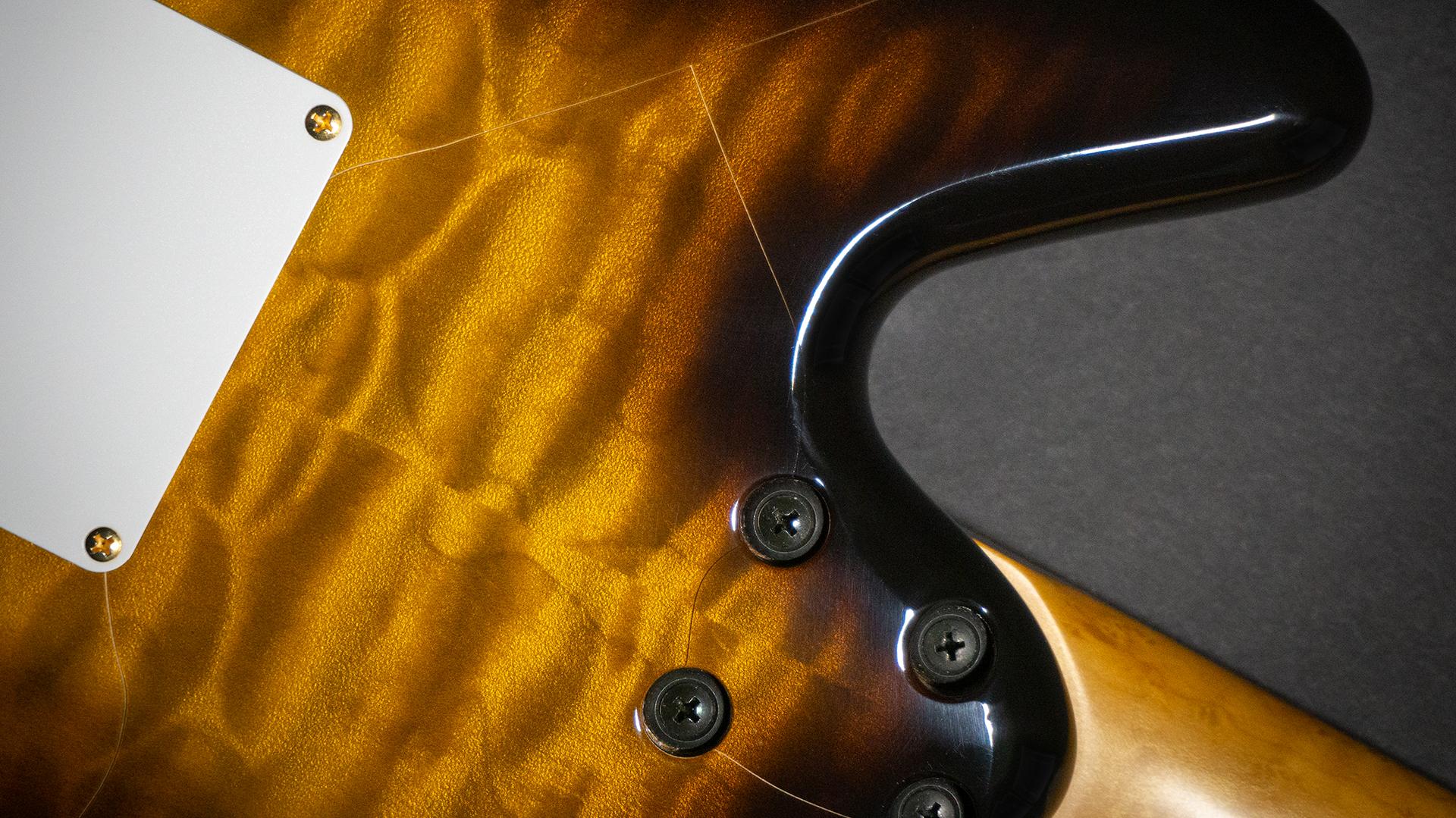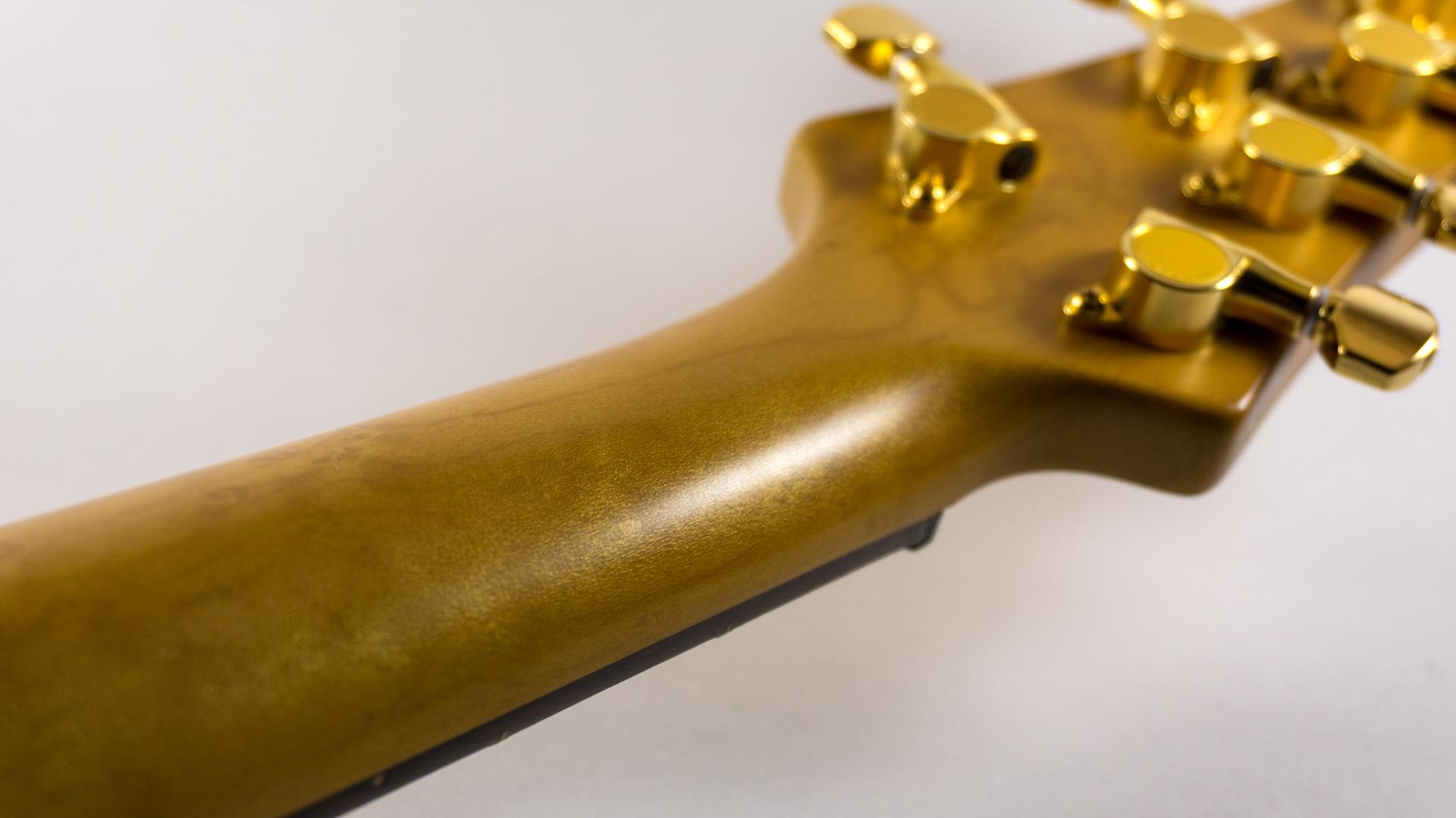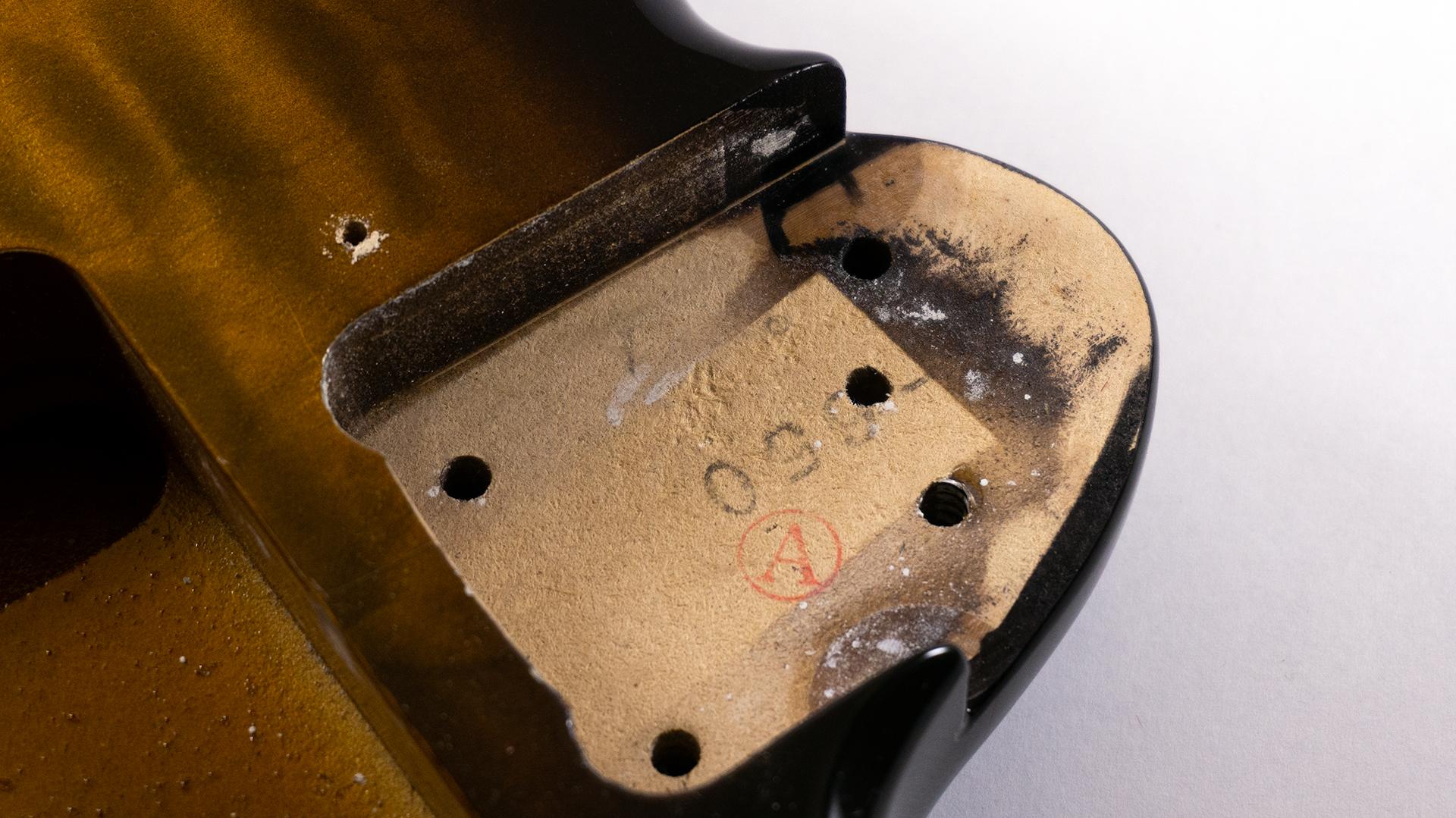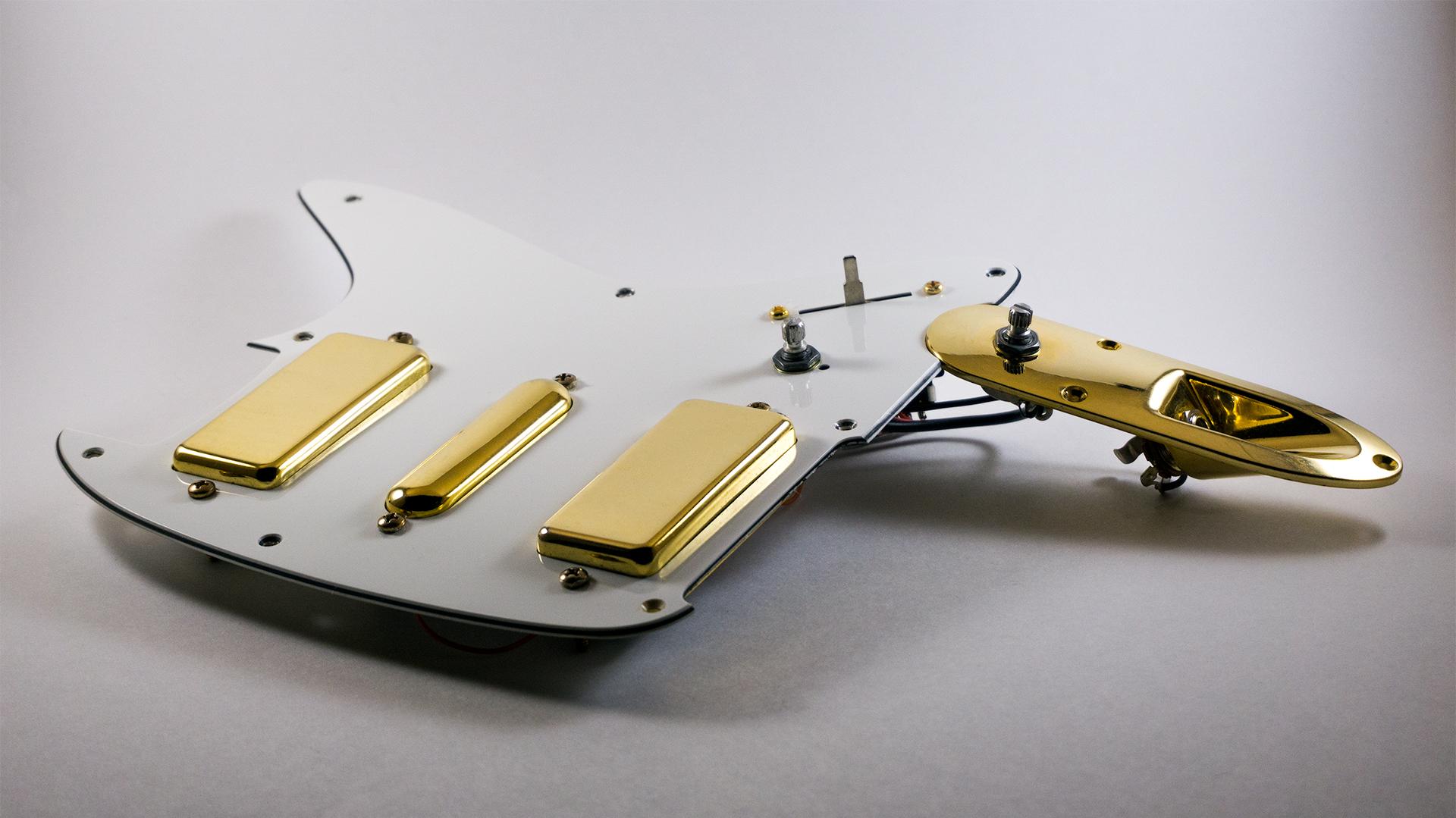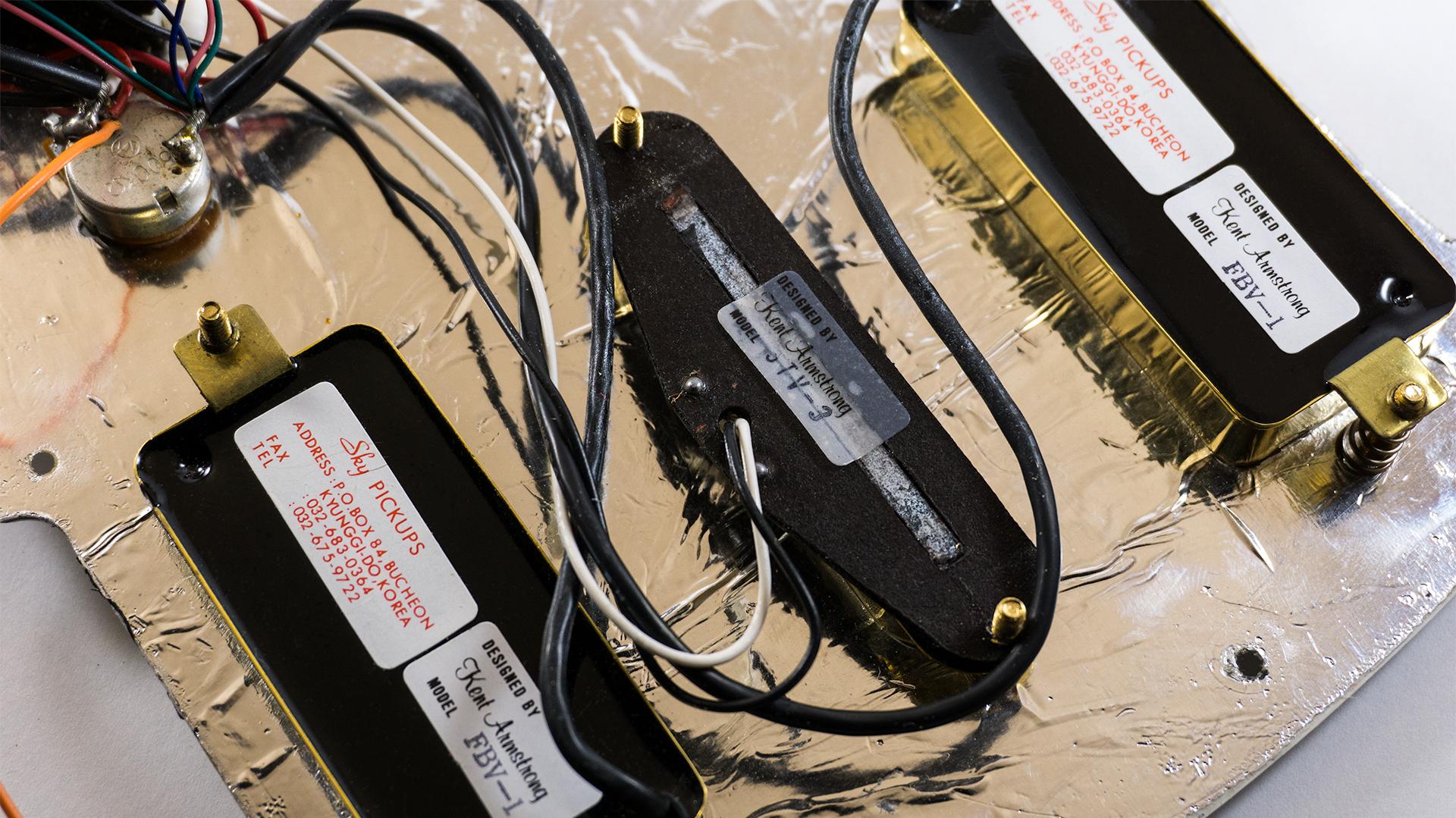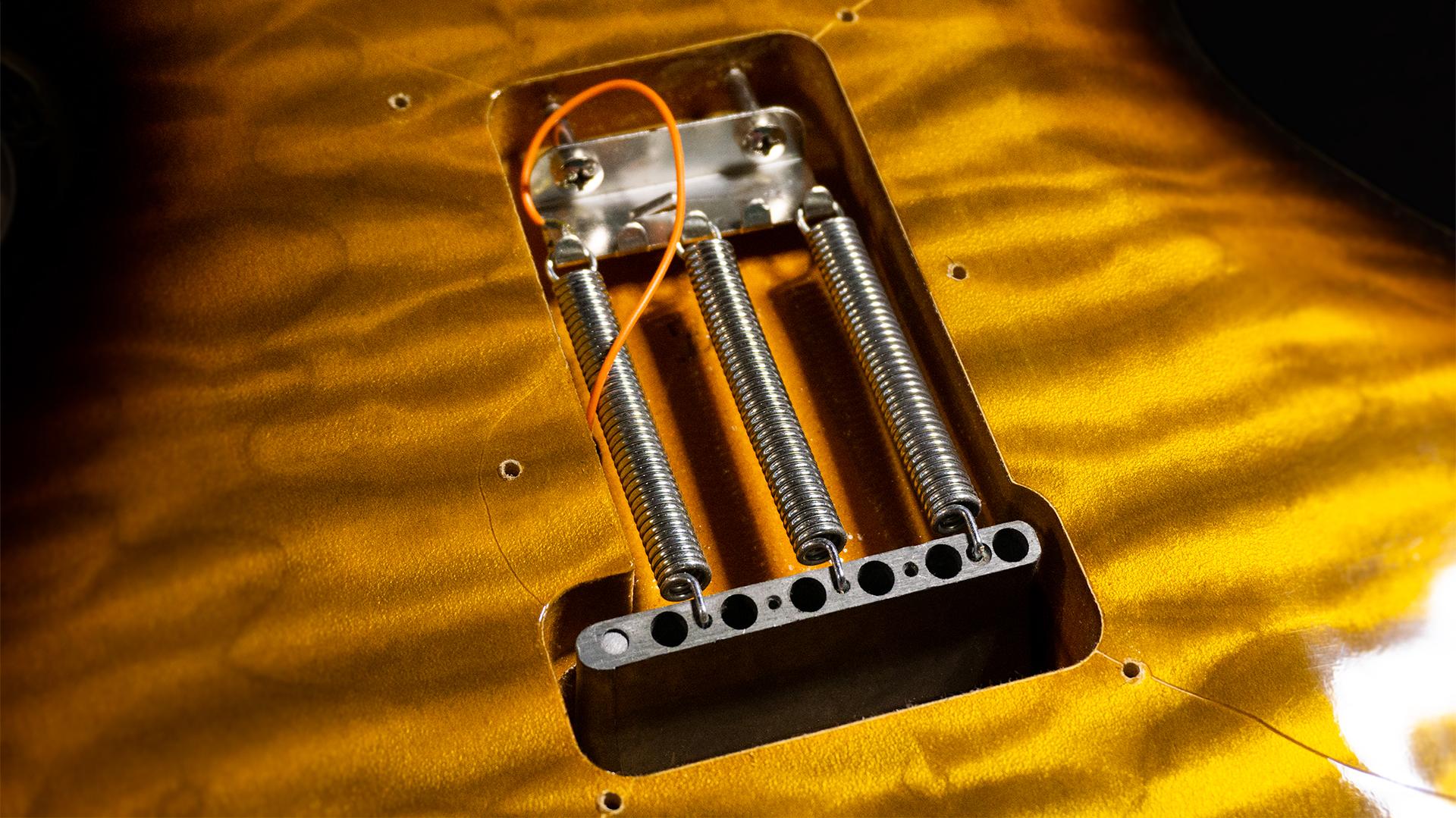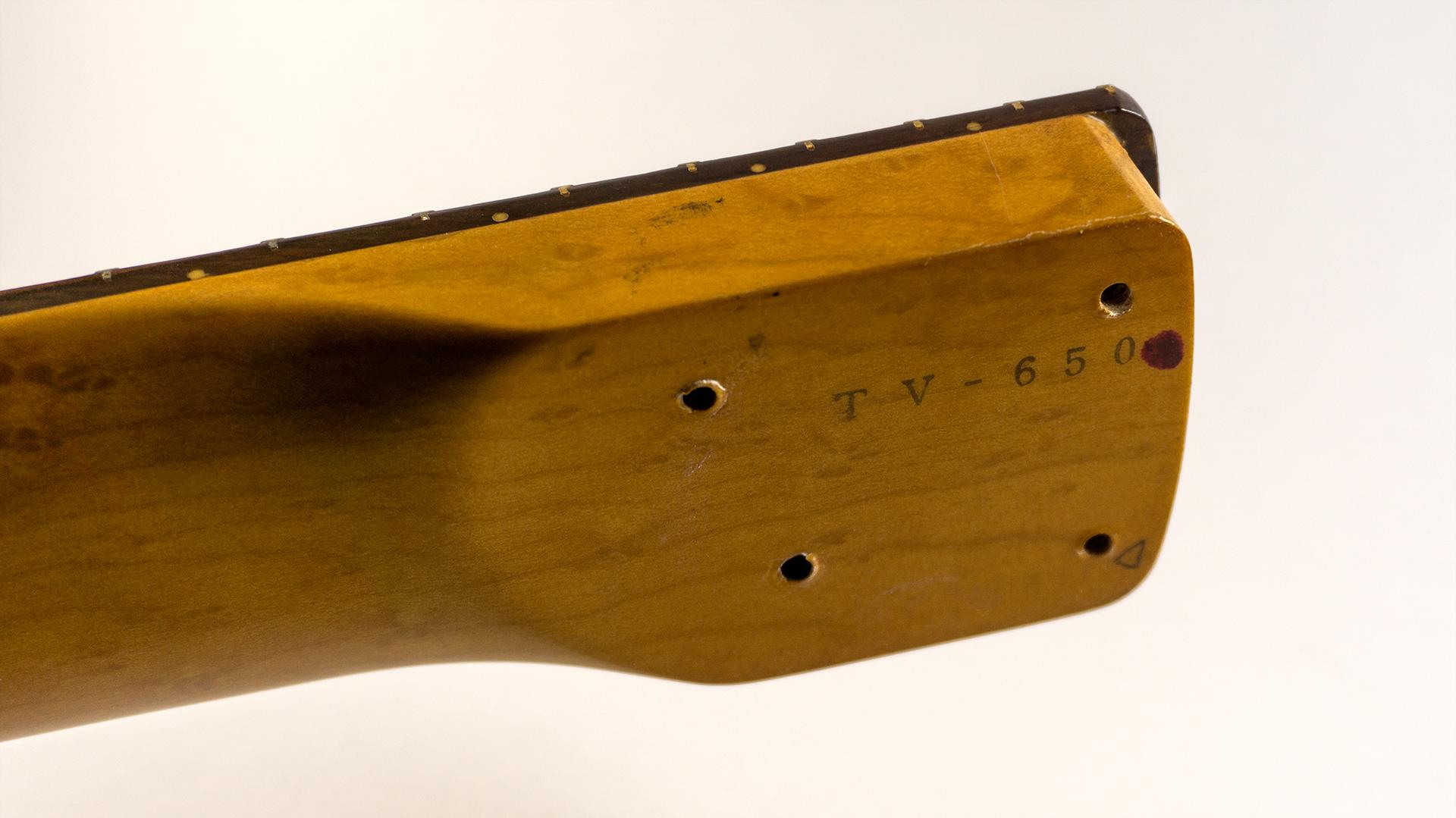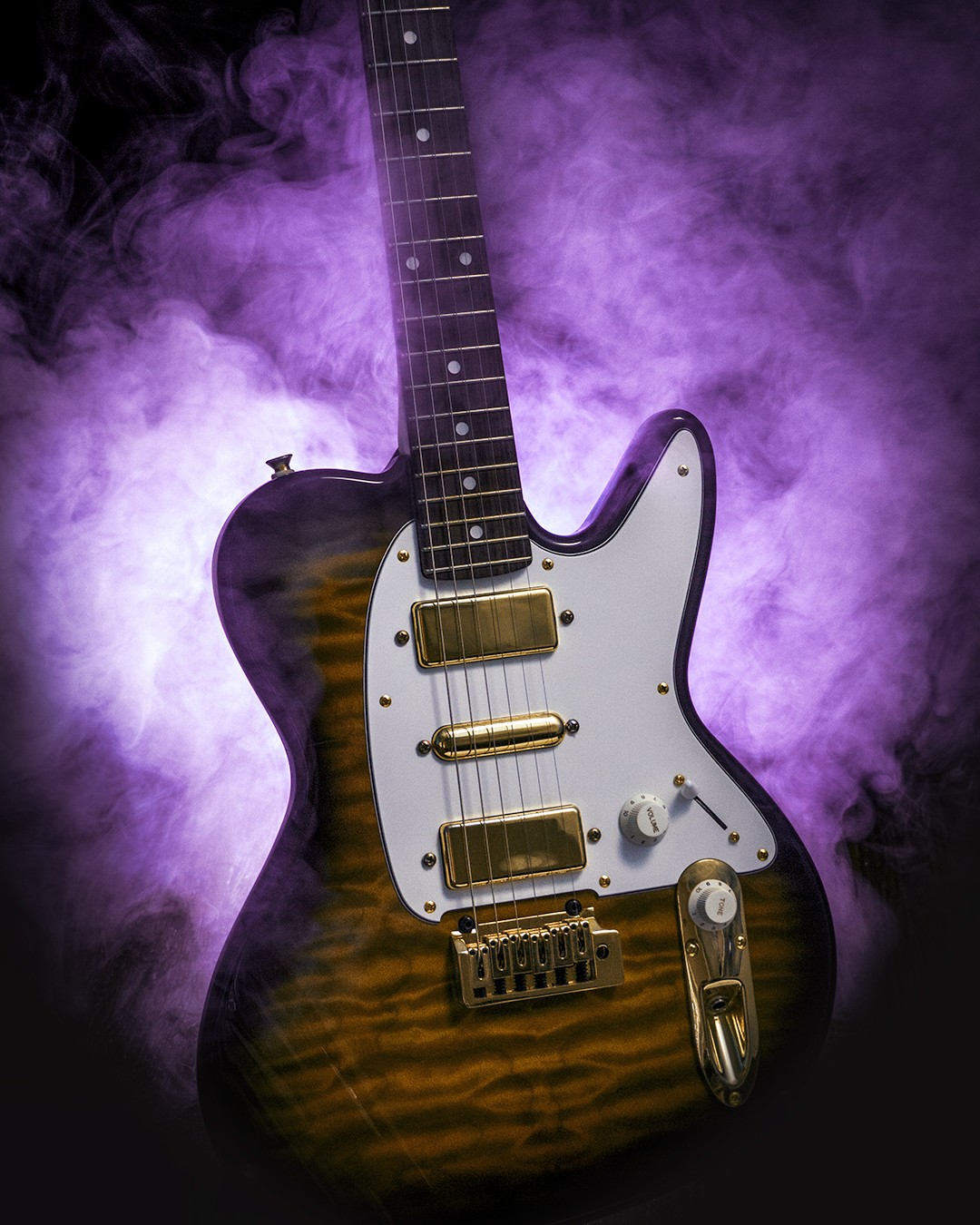
TV750
The TV750 debuted in 1994 along with the TV650 and TC530 to launch the new Talman line of guitars! This model is a "re-branded" TV650 for the USA market; these guitars are identical, only the model number and finish names differ. It's currently unclear why Ibanez decided to increase the model number for the USA, but they did this a few times in the '90s with other Talmans as well. All TV750 models have faux birdseye gravure necks, HSH configuration mini-humbucker and mini-lipstick pickups (designed by Kent Armstrong), and a Resoncast body that features a "sound cavity" route under the pickguard.
These guitars were made in Japan at the legendary Fujigen factory. The debut Talmans (TC530, TV650, TV750) were also the first Ibanez® guitars to feature Korean hardware. The pickups and entire pickguard assemblies were built in Korea, then shipped to Japan to be dropped into the guitar bodies.
Production of the TV750 started in mid to late 1993 (same as the TV650 and TC530).
The TV750 was offered in a single finish (GQBS), while the TV650 had three finishes (GQB, GQC, WH). The TV750's GQBS finish is the exact same as the TV650's GQB. There's no way to tell a true USA market TV750 (GQBS finish) from a '94 TV650 (GQB finish); except maybe finding a guitar that comes with original hang tags, purchase receipt, or similar.
Ibanez's catalogs and marketing materials from this era compare the debut Talmans to Danelectro® guitars because of their similar composite bodies and unique funky tone. It's important to note, Ibanez made some of the design decisions (Resoncast bodies, gravure finishes, Korean hardware) to keep the prices of these Japanese made guitars competitive as the US dollar's value decreased rapidly against the Yen.
- model years 1994
- made in Japan (Fujigen)
- sold in USA
- finishes
- Gravure Quilted Brown Sunburst (GQBS)
- original list price (USA)
- $699.95 (GQBS) ⇒ $1,412.98 (in 2023)
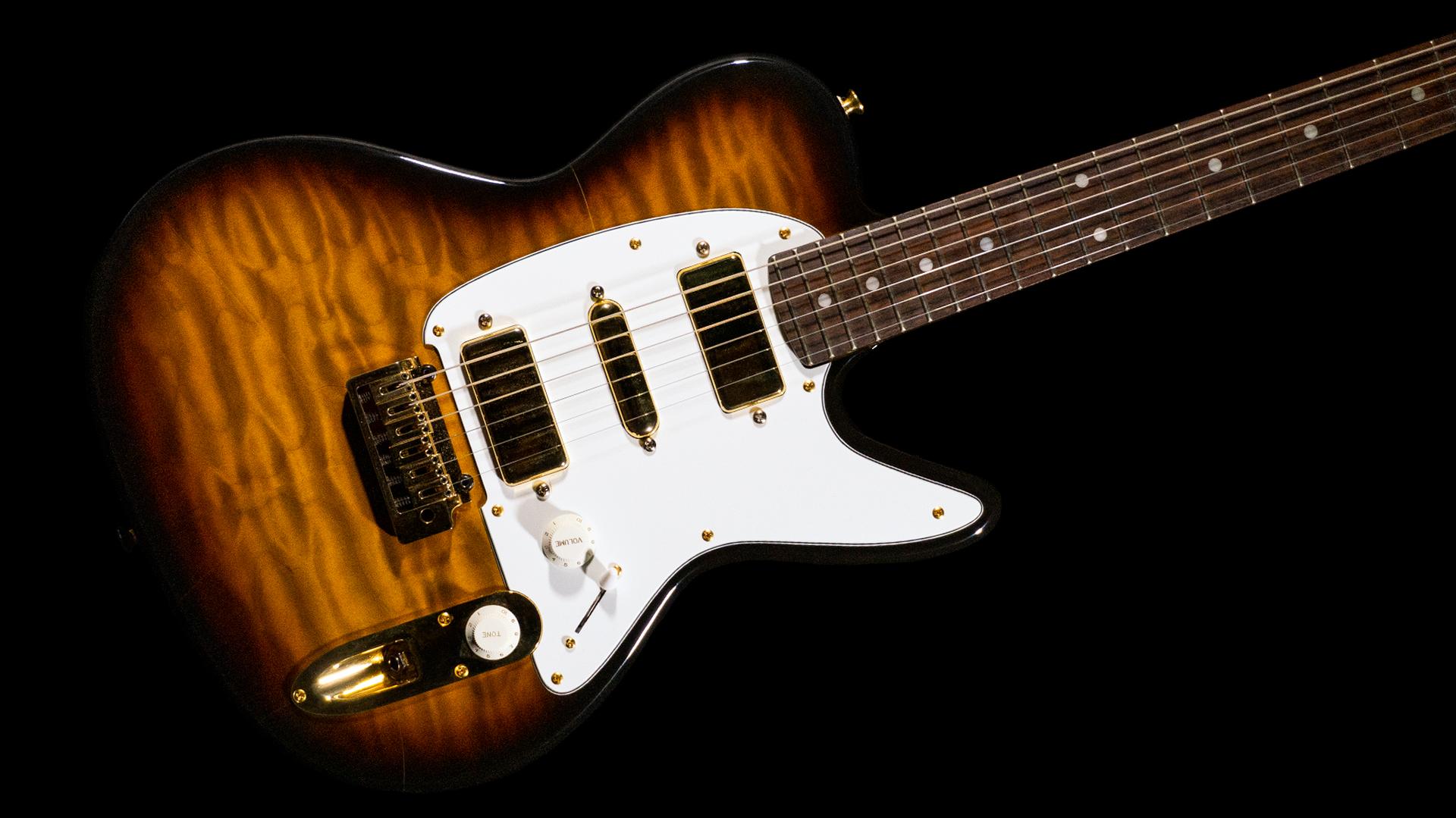
- Highlights
- Specs
- Diagrams
- Parts
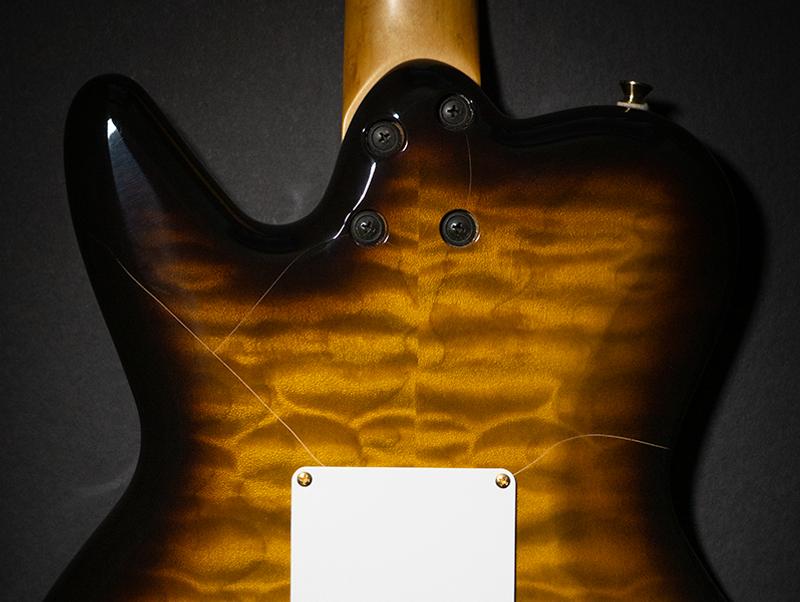
TV body shape
The TV body features an unusual elongated horn and less curves than the more popular TC body shape Talman. It only lasted 2 years, across 3 models, but was later resurrected with Noodle's signature model Talmans!
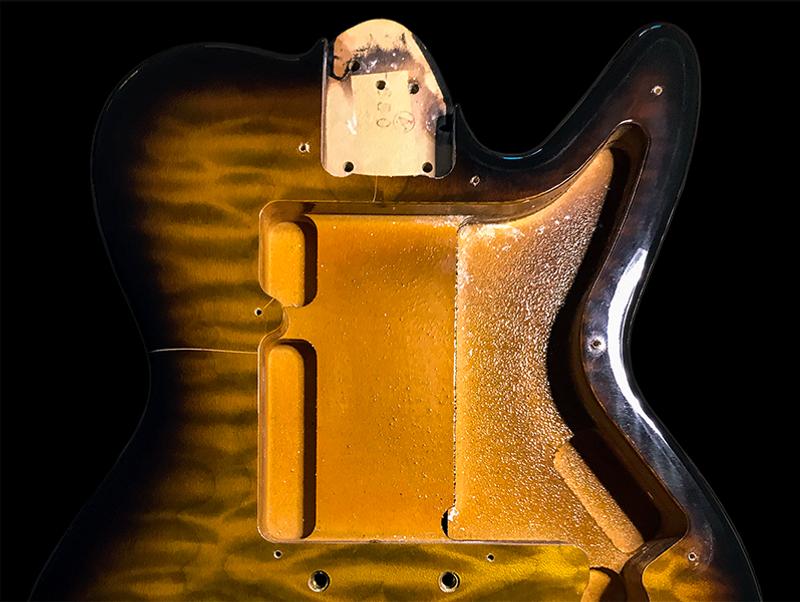
Resoncast body
TV750 Talmans are made of a composite wood material Ibanez marketed as "Resoncast". It's a compressed mixture of resin and alder sawdust, better known as MDF.
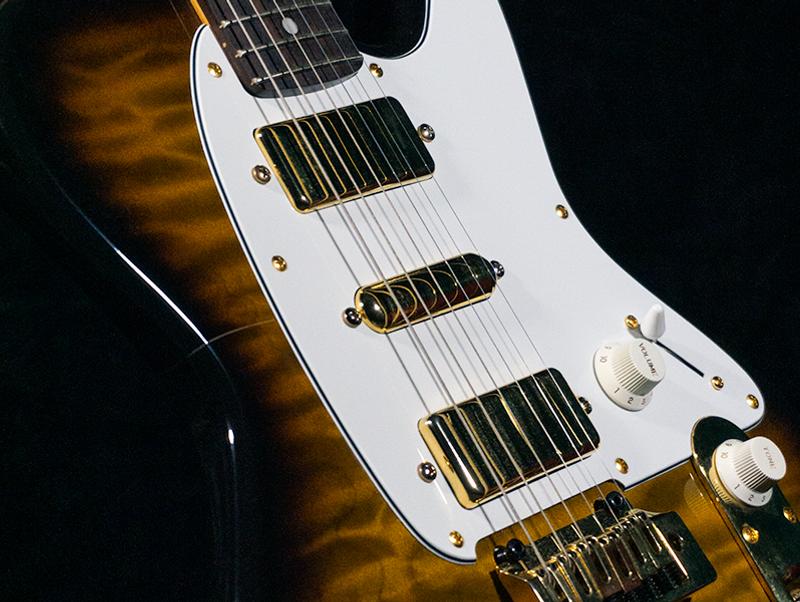
Mini-humbuckers in HSH config
"Sky" pickups, designed by Kent Armstrong. The mini-humbuckers are cleaner than a regular humbucker. They're also quieter and have more presence than a single coil. The middle pickup is a mini-lipstick, and this model (STV-3) is unique to the TV body Talmans.
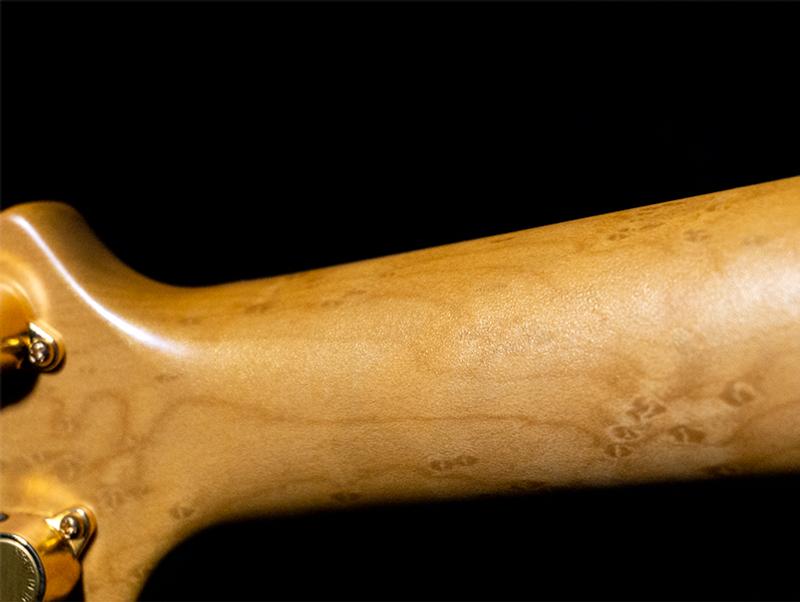
Gravure birdseye neck
The "Birdseye" neck and headstock is actually a printed finish applied over the real wood (non-birdseye maple). Ibanez did this to make the early Talman guitars look more upscale and remain affordable. If you look carefully you'll notice a golden shimmer in the gravure finish.

Gold hardware
Unique to the TV model Talmans, gold plated hardware! It's not only the pickups, bridge, tremolo arm, jack plate and tuners... just about every single screw on the guitar is gold!
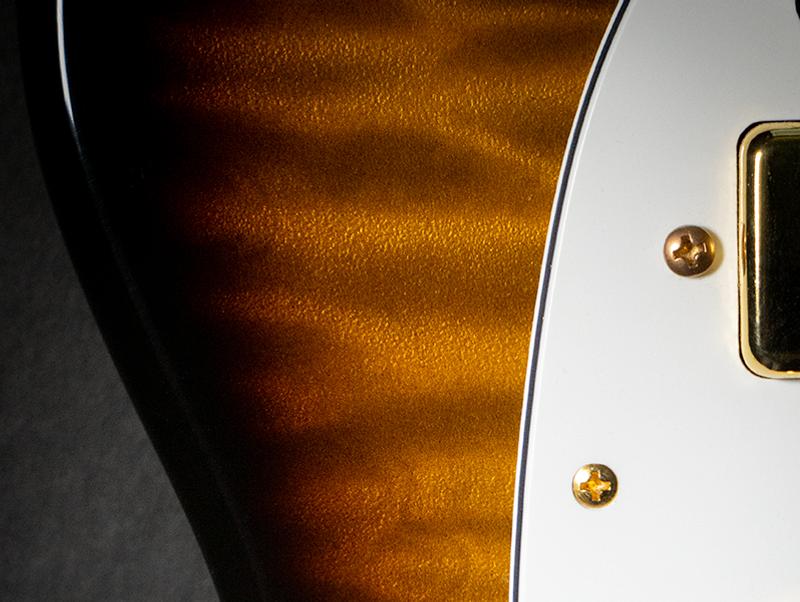
Gravure Quilted Maple
The entire body is wrapped in a gravure finish with a burst sprayed around the edges. The top and back simulate highly figured, quilted maple. The finish has flecks of gold in it that shimmer at different angles, helping sell the illusion.

